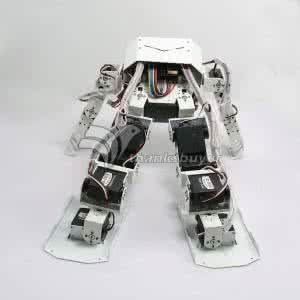Functional autonomous systems often realize complex tasks by utilizing state machines comprised of discrete primitive behaviors and transitions between these behaviors. This architecture has been widely studied in the context of quasi-static and dynamics-independent systems. However, applications of this concept to dynamical systems are relatively sparse, despite extensive research on individual dynamic primitive behaviors, which we refer to as "motion primitives." This paper formalizes a process to determine dynamic-state aware conditions for transitions between motion primitives in the context of safety. The result is framed as a "motion primitive graph" that can be traversed by standard graph search and planning algorithms to realize functional autonomy. To demonstrate this framework, dynamic motion primitives -- including standing up, walking, and jumping -- and the transitions between these behaviors are experimentally realized on a quadrupedal robot.
翻译:暂无翻译




